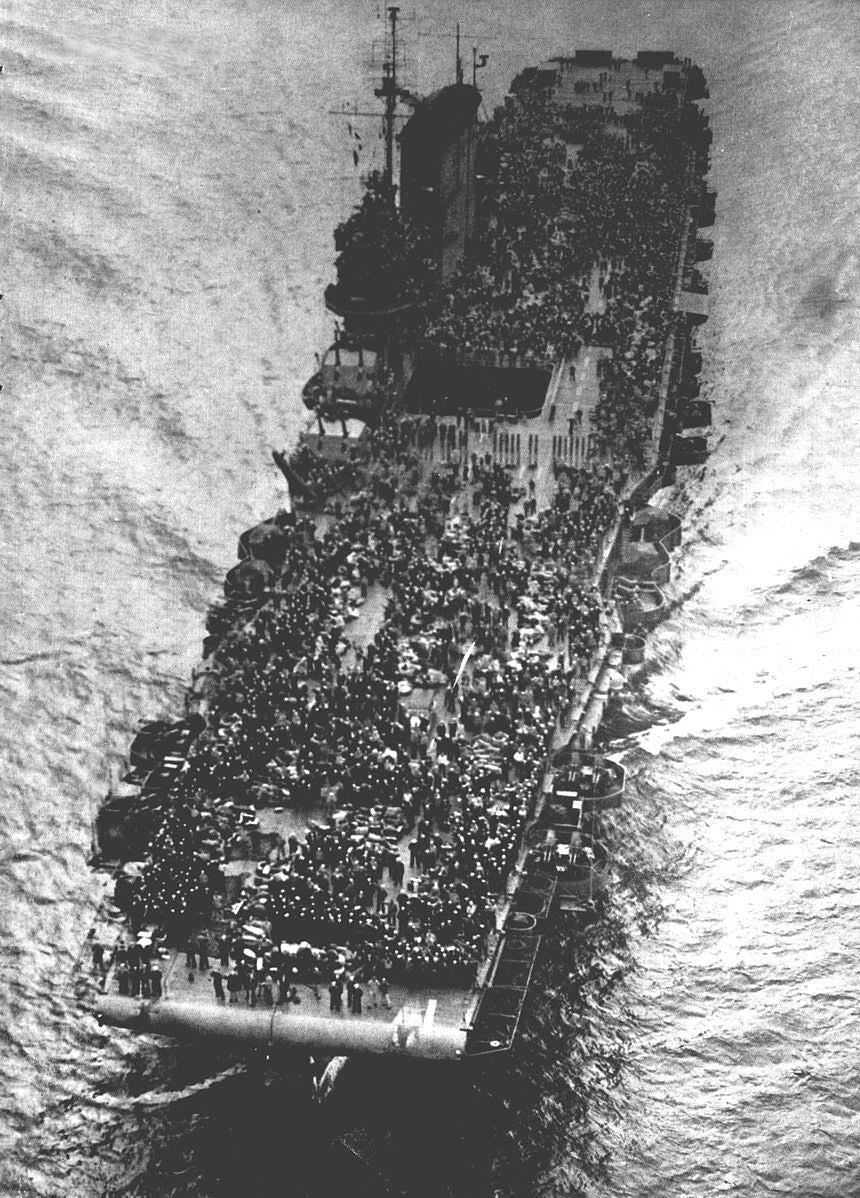Wars End Part 4: Homecoming – Operation Magic Carpet
Published 10:23 pm Friday, September 25, 2020
|
Getting your Trinity Audio player ready...
|
At the end of WW II, the United States had approximately 7.6 million members of its armed forces stationed overseas. Some troops stationed in Europe had been sent home after the surrender of Germany, but most were left in place or readied for transfer to the Pacific theater.
The enormous task of bringing the troops back home was given the code name Operation Magic Carpet and was run by the War Shipping Administration. The European phase of the operation began in June 1945 and ended in February 1946. The Pacific phase began in September 1945 and concluded in September 1946. Late in 1945, the operation was given the subset Operation Santa Claus, and an all-out effort was made to get more troops home by Christmas. The monthly average for the sealift had been about 435,000 but during December 1945, more than 700,000 troops were brought home. The sudden arrival of so many service members exceeded the railroad’s passenger capacity and more than 250,000 of them were stranded before Christmas. America stepped up, opened its heart and thousands of civilians welcomed the service members into their homes for Christmas.
More than 370 vessels were involved in Operation Magic Carpet. Included were civilian ships such as the Queen Mary and the Queen Elizabeth and more than 360 U.S. Navy ships. The Navy modified its ships to allow them to take on more personnel but they also added extra amenities to make the voyage more comfortable. Canteens were set up, along with small stores offering American treats that were rare for servicemen who had been gone so long. Exercise and athletic facilities were set up and enlarged galley [cooking] spaces were added.
Among the ships used were 57 aircraft carriers, six battleships, nine cruisers, 28 attack cargo ships and 222 attack transports. One of the most important ships used was the hospital ship, USS Benevolence [AH-13]. In August 1945, she had been sent to Yokosuka Naval Base in Japan to begin three months of nursing U.S. POWs and civilians back to health. In November, Benevolence made the first of four trips carrying hospitalized troops back to the States.
Among the U.S. Navy ships bringing soldiers and sailors home, the aircraft carrier, USS Saratoga [CV-3] set the record, bringing back more than 29,204 of them home.
Operation Magic Carpet ended in April 1946 when 29 Navy troop transports brought back more than 200,000 servicemen from the China-India-Burma theater. Even though the operation had ended, it took until September for the last 127,000 troops to make it home.
John Vick
[Sources: US Naval History and Heritage Command; Wikipedia; History Collection; history.net]



